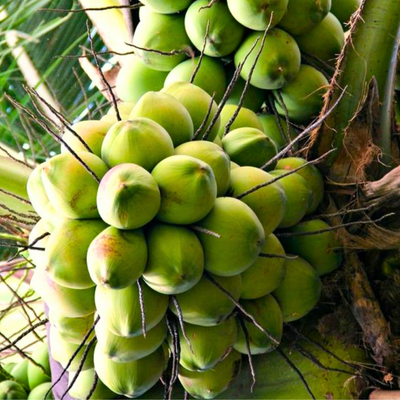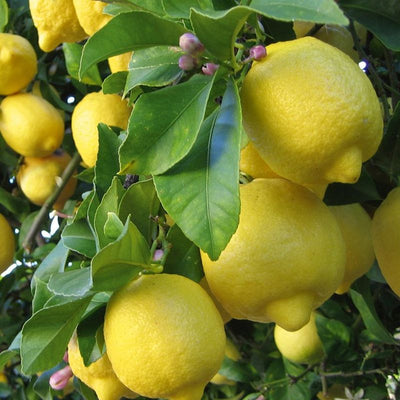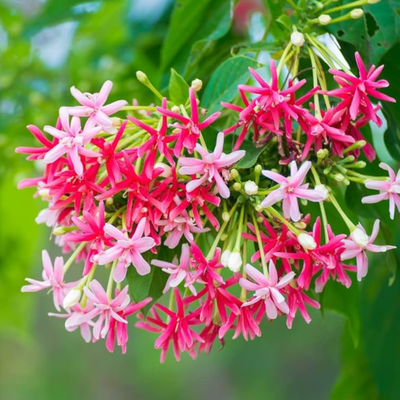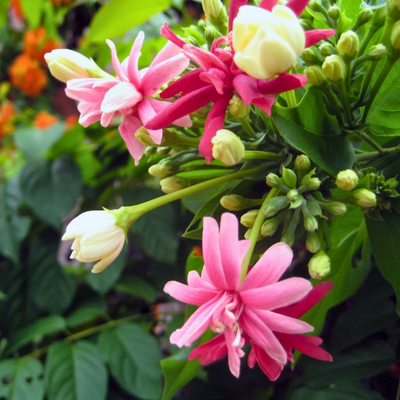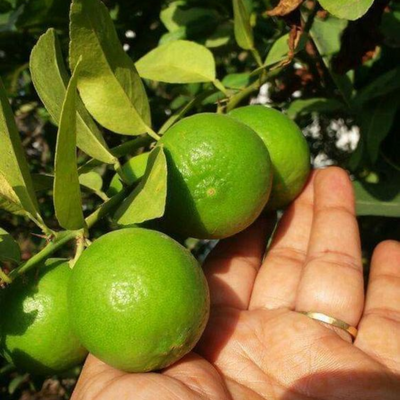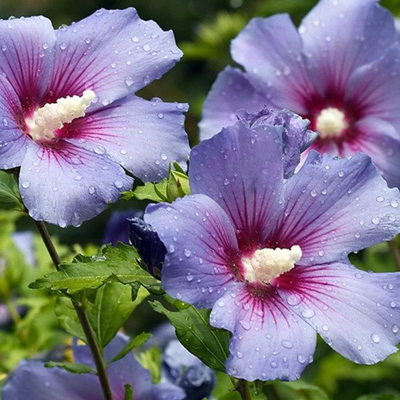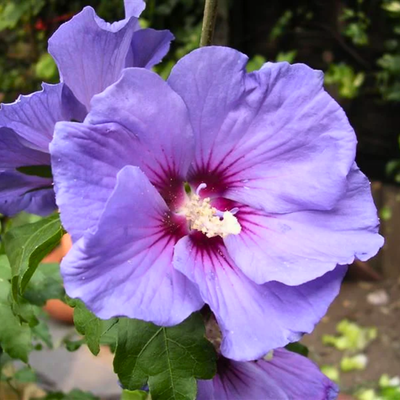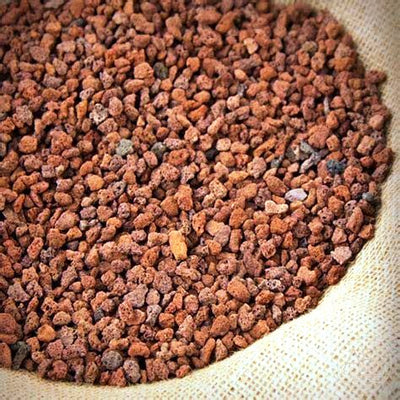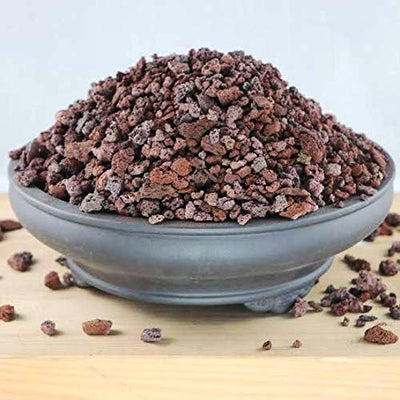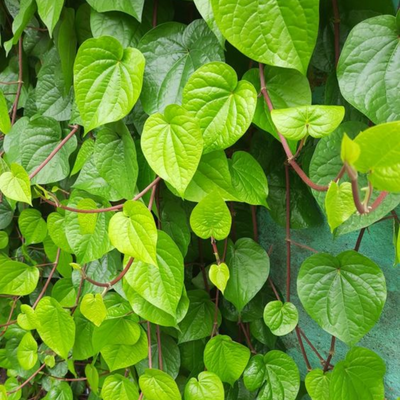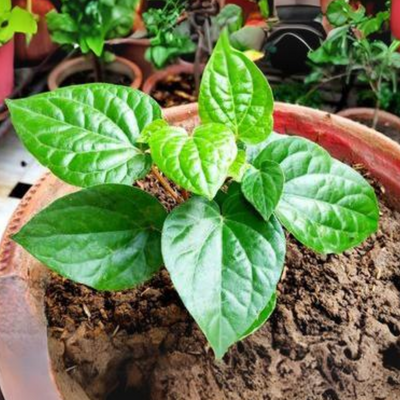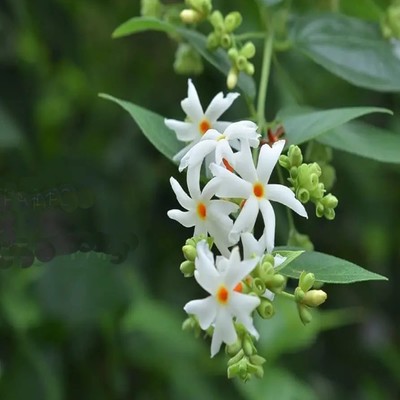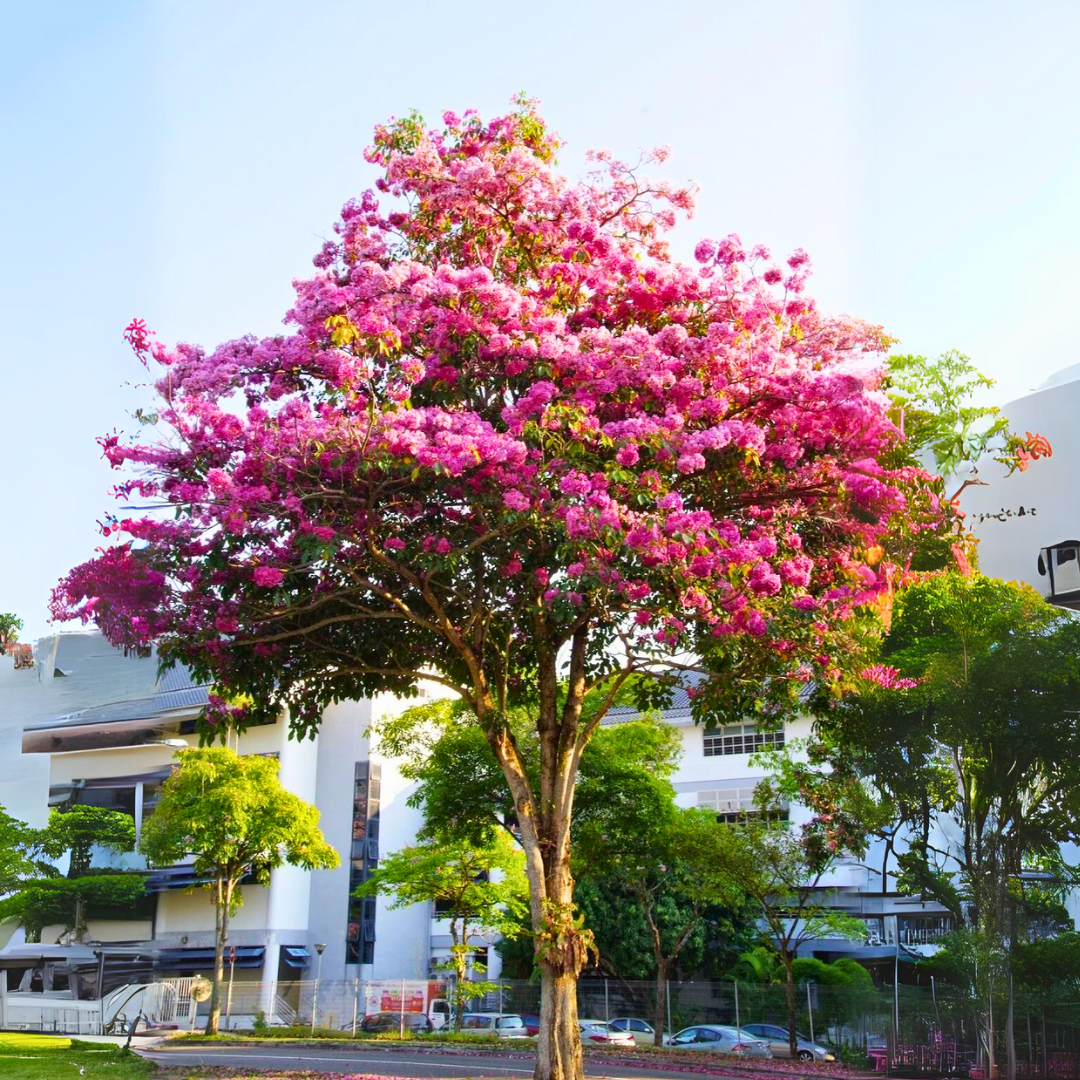

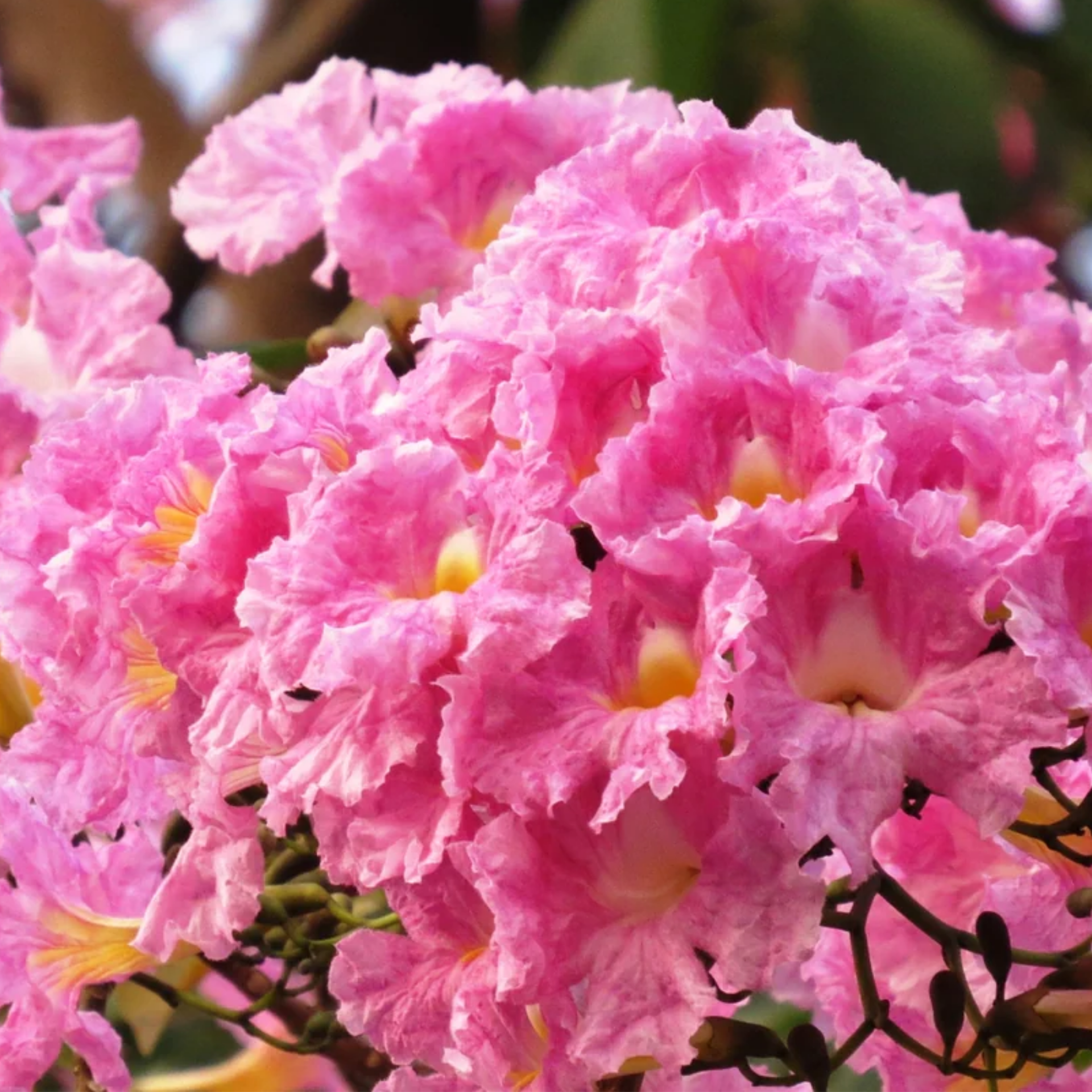
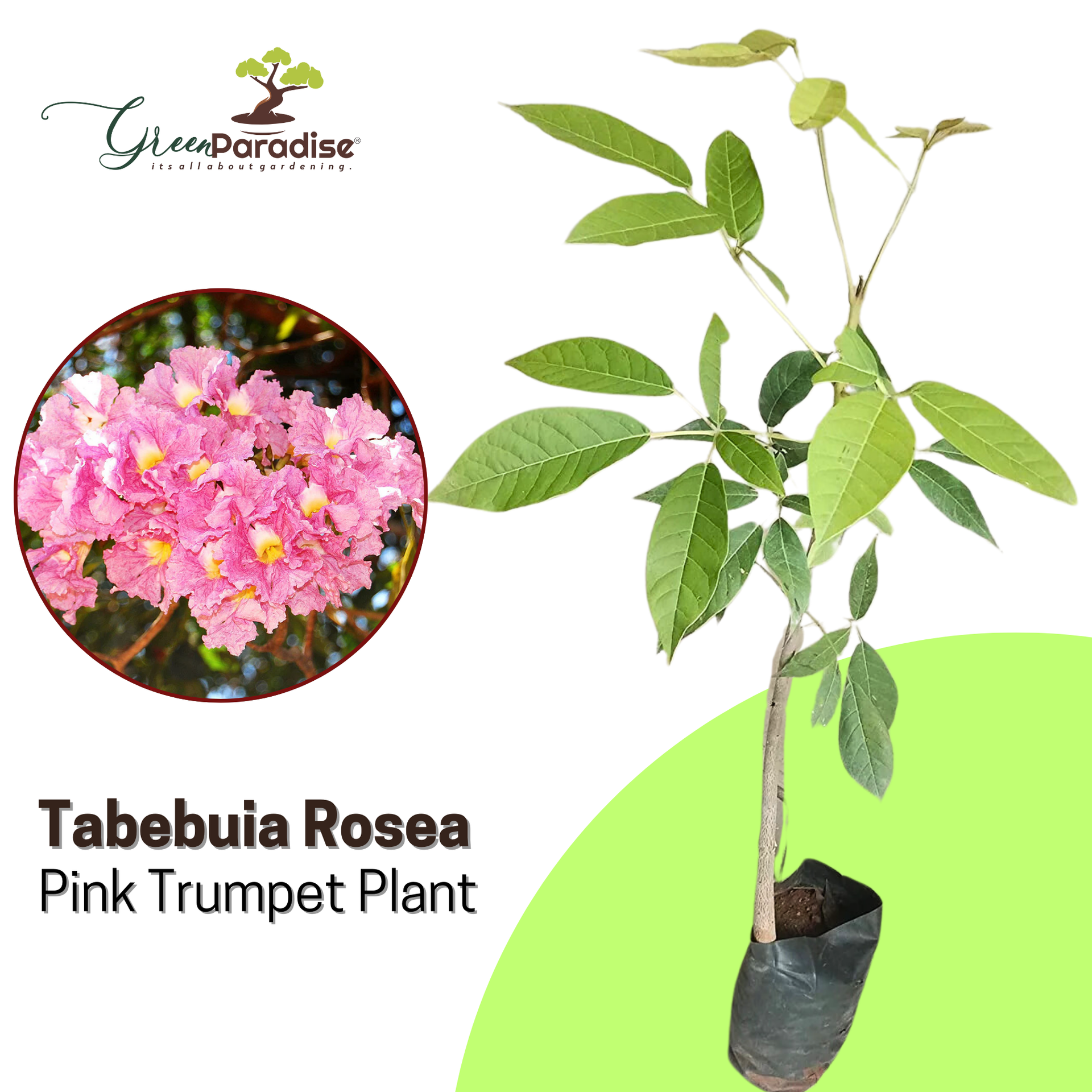
Green Paradise Tabebuia rosea Pink Trumpet Tree
4 reviews
Rs. 699.00
Rs. 399.00
Guaranteed Safe Checkout
Green Paradise Offers Beautiful Tabebuia Rosea Pink Trumpet Tree
About Tabebuia Rosea Pink Trumpet Tree
Green Paradise Presents Beautiful Pink Flowered Tree Tabebuia Rosea. Easy Growing And Can be Grown In any Weather Conditions In India. it is Famous as Pink Trumpet Tree.
Tabebuia Tree Care is very easy, perfect, and breezy in warmer zones in many locations and has no root problems. To grow Tabebuia in containers, choose a well-drained potting medium.
Tabebuia rosea, commonly known as the Pink Trumpet Tree or Rosy Trumpet Tree, is a species of flowering tree native to Central and South America. It belongs to the family Bignoniaceae, which includes other well-known ornamental trees such as Jacaranda and Catalpa.
Here are some key characteristics and information about the Tabebuia rosea:
Appearance:
The Pink Trumpet Tree is a deciduous tree that typically grows to a height of 10 to 20 meters (30 to 65 feet) and has a spreading canopy. It has a straight trunk with a grayish-brown bark. The leaves are compound and palmately divided into five to seven leaflets.
Flowers:
The tree gets its name from its showy, trumpet-shaped flowers that bloom in clusters. The flowers are usually pink to lavender in color, although there can be some variation. They have a tubular shape with flared lobes at the end, creating a trumpet-like appearance. The blooms are quite large, measuring around 5 to 8 centimeters (2 to 3 inches) in diameter. The flowering period typically occurs in the spring, although it can vary depending on the climate.
Fruit:
After flowering, the Pink Trumpet Tree produces elongated seed capsules that contain numerous small-winged seeds. As the capsules mature, they turn brown and split open to release the seeds, which are then dispersed by the wind.
Cultivation:
Tabebuia rosea is cultivated as an ornamental tree in many tropical and subtropical regions around the world. It prefers a sunny location and well-drained soil. The tree is relatively drought-tolerant and can survive in various soil types. It is often used as a street tree, in parks, and in residential gardens due to its attractive flowers and overall ornamental value.
Medicinal Uses:
In traditional medicine, certain parts of the Pink Trumpet Tree have been used to treat various ailments. The bark, leaves, and flowers are believed to possess anti-inflammatory, antimicrobial, and antifungal properties. However, it's important to note that traditional uses of plants for medicinal purposes should be approached with caution and consultation with a healthcare professional is always recommended.
Overall, Tabebuia rosea, or the Pink Trumpet Tree, is a beautiful flowering tree that adds color and charm to its surroundings.
How To Grow Tabebuia Rosea Pink Trumpet Tree
To grow Tabebuia rosea, or the Pink Trumpet Tree, you can follow these general guidelines:
Climate and Location:
Pink Trumpet Trees thrive in tropical and subtropical climates. They prefer full sun exposure to ensure proper growth and abundant flowering. Choose a location in your garden or landscape that receives at least six hours of direct sunlight each day.
Soil:
The tree adapts well to various soil types, but it prefers well-draining soil with a slightly acidic to neutral pH. If your soil is heavy or compacted, you can improve drainage by adding organic matter such as compost or well-rotted manure.
Planting:
Select a healthy young sapling from a reputable nursery or source. Dig a hole that is wider and slightly deeper than the root ball of the tree. Place the sapling in the hole, ensuring that the top of the root ball is level with or slightly above the ground. Backfill the hole with soil, gently firming it around the roots. Water the tree thoroughly after planting.
Watering:
While the Pink Trumpet Tree is relatively drought-tolerant, it benefits from regular watering, especially during dry periods or in the early stages of growth. Provide deep watering to establish a strong root system. However, be cautious not to overwater, as excessive moisture can lead to root rot.
Fertilization:
Pink Trumpet Trees generally don't require frequent fertilization, but you can apply a balanced slow-release fertilizer in spring to promote healthy growth and flowering. Follow the instructions on the fertilizer package for application rates. Avoid applying fertilizer too close to the trunk of the tree to prevent root burn.
Pruning:
Pruning is not typically necessary for Pink Trumpet Trees. However, if you want to shape the tree or remove any dead or damaged branches, you can prune it during the dormant season (winter or early spring) to minimize stress on the tree.
Pest and Disease Control:
Pink Trumpet Trees are generally resistant to pests and diseases. However, keep an eye out for common garden pests like aphids or scale insects. If infestations occur, you can treat them with appropriate organic or chemical insecticides. Regularly inspect the tree for any signs of disease or infection and take appropriate measures if needed.
Mulching:
Apply a layer of organic mulch around the base of the tree, leaving a small gap around the trunk to prevent moisture accumulation. Mulching helps retain soil moisture, suppresses weed growth, and moderates soil temperature.
With proper care, Tabebuia rosea can grow into a beautiful and healthy Pink Trumpet Tree, providing stunning floral displays and enhancing the aesthetic appeal of your garden or landscape.
Care: Tabebuia rosea pruning and providing its soil with proper fertilizers is an important part of caring for it. It is semi-evergreen/semi-deciduous shedding foliage for a short period in late spring trees. Tabebuia is a genus of flowering plants in the family Bignoniaceae.
S
Saptarishi Barua It's looks good although it is now plant now it tooks time to be grow up let's see it will grow and flourish 🤞🏻🤞🏻🤞🏻❤️❤️❤️
T
Thomas Varghese Plant is healthy
A
Anonymous Received in good condition. But the size was small. Everything else is ok. Plants arrived healthy. Growing well now.
M
Manmohan Singh Chahal Within a week, it is with new leaves.
𝗥𝗲𝗹𝗮𝘁𝗲𝗱 𝗽𝗿𝗼𝗱𝘂𝗰𝘁𝘀
Outdoor Plant
Green Paradise Dwarf Variety Green Coconut Plant
Green Paradise Offers Dwarf Variety Green Coconut Plant About Green Coconut Plant The dwarf variety of green coconut plants, also known as the dwarf coconut palm or Cocos nucifera...
Rs. 699.00
Rs. 499.00
Fruit Plants
Green Paradise Italian Lemon Fruit Live Plant
Green Paradise Offers Amazing And Most Easy To Grow Italian Lemon Plant About The Italian Lemon Plant Light The Lemon Tree thrives in full sun in a place that...
Rs. 399.00
Flowering Plants
Madhumalati Rangoon Creeper Double Petal Plant
Green Paradise Offers Beautiful Madhumalti Double Petal Rangoon Creeper Plant About Madhumalti Creeper The Madhumalti Creeper with Double Petals, also known as Rangoon Creeper (Scientific name: Quisqualis indica), is a...
Rs. 539.00
Rs. 399.00
Fruit Plants
Green Paradise Original Desi Lemon (Kagzi Lemon)Plant
Green Paradise Offers Original & Healthy Desi Lemon Plant About Desi Lemon Plant The Desi Lemon plant, scientifically known as Citrus limon, is a small to medium-sized tree...
Rs. 349.00
Flowering Plants
New rare Blue Hibiscuss Alyogyne huegelii live and healthy plant
Enchanting Elegance: Unveiling the Allure of the Green Paradise Blue Hibiscus Plant About Blue Hibiscus Plant Nature never ceases to amaze us with its boundless creativity, and the blue hibiscus...
Rs. 299.00
SOIL & FERTILIZERS
porous rocks for Soilmix In bonsai,succulents and adenium Plants 5kg pack
green Paradise porous rocks Provides High quality ingredients throughout, Good water-retention, Good drainage and Good aeration to the plants. porous rocks are Light Weight And used as a component of...
Rs. 649.00
Herbal And Medicinal Plants
Maghai Pan Nagarvel Betel Leaf Live Plant
Green Paradise Offers Maghai Pan (Betel Leaf) Plant About Maghai Pan Plant Maghai Paan (Betel leaf), also known as Piper beetle, is a perennial vine belonging to the Piperaceae family....
Rs. 349.00
Flowering Plants
Green Paradise Parijat Plant Night-flowering jasmine Live Plant
🌿 Green Paradise® Harshringar Parijat Plant 🌿 Transform your garden with the divine beauty of the Harshringar Parijat plant! Known for its fragrant white flowers with an orange stem, this...
Rs. 299.00

